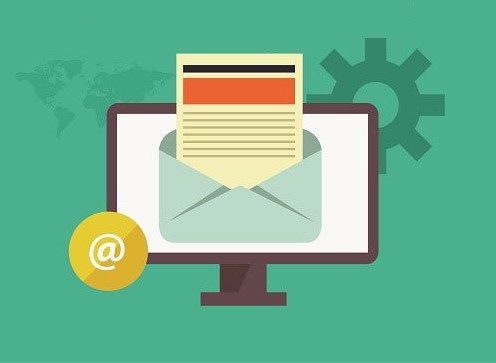How to Segment a Mailing List?
In this article you will learn more about mailing lists
Having in mind the astonishing effect of email marketing when it comes to efficiency and performance, with estimated ROI 38:1 (source), it’s safe to say that this is a strategy you want to keep developing and using to reach your audience.

Having in mind the astonishing effect of email marketing when it comes to efficiency and performance, with estimated ROI 38:1 (source), it’s safe to say that this is a strategy you want to keep developing and using to reach your audience.
One of the things that have a massive impact on email marketing performance is certainly your mailing list. It’s the list of all the contacts you collect through different lead building strategies. Those contacts represent your audience, i.e., online users interested in your work, regardless if you have a blog, an online store, an ebook download, etc.
Of course, the main goal of email marketing is to grow your mailing list and thus increase the number of people you reach through this form of online marketing.
However, what makes a big difference is the segmentation of the mailing list.
 Source: https://www.pexels.com/photo/business-charts-commerce-computer-265087/
Source: https://www.pexels.com/photo/business-charts-commerce-computer-265087/
 Source: https://www.pexels.com/photo/business-charts-commerce-computer-265087/
Source: https://www.pexels.com/photo/business-charts-commerce-computer-265087/
Mailing list
You see, contacts on your mailing list can include a lot of different people. For example, some contacts may be your previous customers, while others are people who are potential customers. With only this in mind, you can understand how your approach towards these two groups can’t and shouldn’t be the same. Then there are many other differences that may include different age, location, interests, etc. Even though your mailing list includes people willing to give you consent for you to reach out, you need to have in mind that the content you share will not appeal to everyone on that list. A lot of different factors affect the efficiency of the email you send, so segmentation is a practice that enables you to filter the subscribers so that emails are better targeted and thus more effective.Get your in-depth guide on email marketing, with tips on starting with email marketing and using it to grow your business: Email marketing for beginners
How to segment a mailing list
The following practices are designed to inspire you in different ways so you can segment your mailing list.Use tags/lists/segments
Depending on the email marketing software you use, you will get tools to segment the mailing list. Some email marketing applications, such as GetResponse, provide list feature to segment subscribers, with additional options to use tags and custom fields to optimize your audience further. On the other hand, ConvertKit doesn’t have lists, but you’ll solely need to rely on the use of tags and segments to sort subscribers of your list. Either way has its pros, and the choice also depends on other functionalities the software provides.Tags
Use tags to label the subscribers with relevant information. For example, you can label your current/previous customers, people who participate in a competition, challenge, etc. You can even use tags to track how subscribers became your customers. Here is an example. Subscribers signed up for one download, they got another download, they claimed a coupon, and eventually, they bought the product from you. For each of these actions, you give a tag, and that’s how you track their journey of becoming your customers.Lists
Users get on the list by filling out a form that is linked to that specific list in the email marketing software. If the software enables multiple lists, you can segment the users based on the form they fill in and then you optimize your emails based on this.Segments
Segments enable you to create a custom audience. Again, the power of this functionality depends on the software you use. Frequently, you can use segments to filter the users who have a certain tag, certain custom field, date-based criteria, etc. You can even use multiple segments as conditions for creating a custom audience. One example of a custom segment is people who have a customer tag, who are from X location and who have opened your newsletter in the past 60 days. This is just one example, but you get the idea on how you can use and mix different conditions to segment your list.Define your influence/style
Now, when you have different groups of people within your mailing list, you need to define an approach for each group. Start by thinking about how and why you have created these groups in the first place. What kind of goals do you want to achieve? By defining the groups of subscribers and your goals, you will be one step closer to defining your voice. Keep in mind that this needs to be reflected in the content you share with your email subscribers. General email notifications and dull language will get you nowhere. If you have been using email marketing for a while, you know that the message you share needs to be powerful, engaging, insightful. It needs to trigger emotions, to encourage a reaction, and to really speak to the people. This can only be achieved if you are able to understand your subscribers, what they might be thinking and needing in that particular moment. Therefore, use a different style and messages for different groups of people on your mailing list. Gradually, this will make your messages more custom-tailored, your approach more personalized, and the overall email marketing more effective.Do regular cleanup
Don’t wait for spring to do a yearly cleanup. With email marketing, it’s helpful to do a regular cleanup of a mailing list. What this means is that you go through the list and explore how engaged and active your subscribers really are. Email marketing tools usually enable you to filter those subscribers. You can even choose a specific date and filter the actions prior to that date. For example, you can segment the users who haven’t opened any of your messages in the past 90 days. People who don’t open your emails are usually not really your customers. They don’t check that email address, or your emails might be going to spam and never really reaching the subscribers. Either way, you don’t have an effect when you send emails to those subscribers. Not only is there no effect, but it has a negative impact on your deliverability. If you keep sending to the inactive subscribers, your open/click rates will be low. This reflects poorly on email deliverability. Therefore, think about the mailing list cleanup regularly and make sure you remove inactive subscribers.Email scoring
Even though you might spend years piling up emails in your mailing list and you find it difficult to give those away, this might just be the right decision for your business. Have in mind that email addresses have an “expiration date”. What does this mean? Well, when someone subscribes to your newsletter or downloads a lead magnet, they are probably interested in that content and learning more about you. However, as the months (and even years) pass, chances are the person will lose interest. They will simply no longer be your clients. Either they found another product from the same category, or they might not even need your product/or service anymore. Email scoring is the process that helps you add values to the email contacts and use it to manage contacts with more success. Besides the date of purchase, other values can be calculated in the score, such as customer spending, behavior, etc. Basically, when you segment the contacts using such values, you can:- Nurture those contacts with more success – You’ll know exactly what contacts are most valuable, and you’ll create campaigns to keep those contacts engaged.
- Find better contacts in the future – Scoring helps you determine different criteria that define your ideal buyer persona. Use the data to create better targeted ads and lead magnet strategies to attract similar contacts in the future.
Analyze the efficiency of opt-ins, workflows, campaigns…
On the one hand, you have your mailing list with all those segmentation options mentioned above. The primary goal is to learn more about your audience and use different groups/segments to create more personalized and effective email campaigns Furthermore, learning about your subscribers and their behavior also helps you redefine your entire email marketing strategy. This is done by comparing the user data with the strategies you have in place currently:Opt-ins
These are basically downloadables and free materials you offer in exchange for an email address. The idea with creating opt-ins is to design and offer something your subscribers will want to get. Obviously, the goal is to attract the right audience, i.e., those who could also be interested in your business. However, it may happen that opt-ins attract different target groups, which is something you might not think of when first creating the content. When you analyze your audience and segment the list, you’ll be able to determine if the opt-in is successful at attracting valuable contacts. If you notice that you get downloads but unsubscribers immediately after, chances are you’re targeting the wrong audience and you need to replace that opt-in. After all, you want opt-ins that help you attract your right audience and potential customers. That’s much more important than growing the number of subscribers at any cost.Workflows
When subscribers get on your mailing list, you can use the power of workflows or automation to filter and engage those subscribers. Here is what that means in a nutshell: Someone subscribes to your newsletter. They don’t necessarily know about your business, what you do, what you have to offer. Therefore, creating a workflow that slowly introduces them to you. Firstly, they’ll get the downloadable material they signed up for. Then, you can introduce yourself as an influencer and the person behind the newsletter. Then, you might want to offer more free content if you have it. After that, you can introduce your business and even directly pitch an offer (such as a discount, exclusive invite, etc.). You’ll create this as a sequence of emails that are automated and delivered to the subscribers at a regular pace. The purpose of this is to:- Promote your business gradually and get the people interested
- Filter out contacts that aren’t really interested (they’ll likely unsubscribe along the way)
- Both goals lead you towards creating a better and more engaged mailing list.
Campaigns
Finally, use the statistics about the campaigns to analyze how effective your email marketing campaigns are. There is always a place for improvement. You can always find some things that work well (for example, using emojis in the subject line might increase open rates), or things that don’t work well (for example, using images might reduce deliverability as the image might not be optimized). Analyze your previous campaigns and compare the data, such as:- Open rate
- Click rate
- Unsubscribe rate
- Effective techniques to engage your subscribers
- What content performs poorly
- How to optimize messages based on list segmentation options
- How you can improve the performance of future email campaigns
